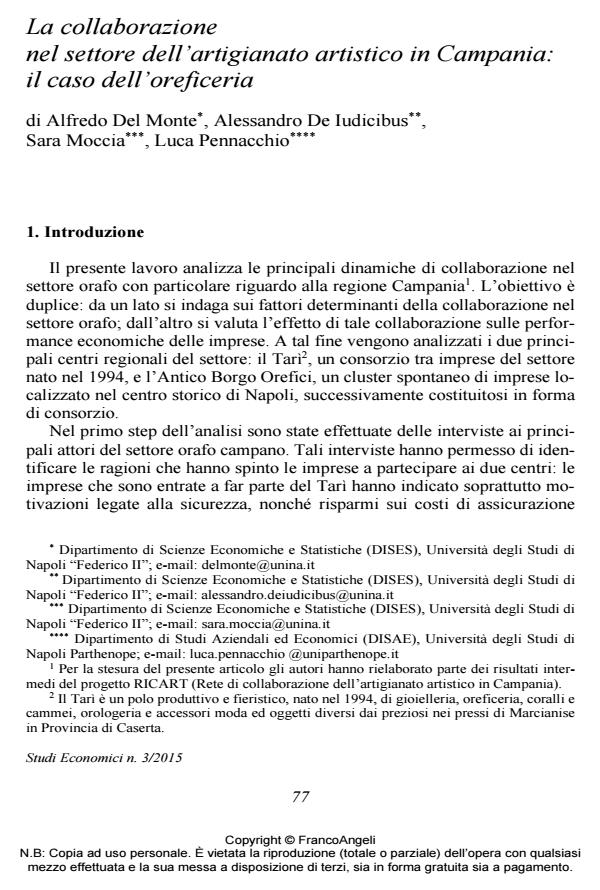La collaborazione nel settore dell’artigianato artistico in Campania: il caso dell’oreficeria
Titolo Rivista STUDI ECONOMICI
Autori/Curatori Alfredo Del Monte, Alessandro De Iudicibus, Sara Moccia, Luca Pennacchio
Anno di pubblicazione 2016 Fascicolo 2015/117
Lingua Italiano Numero pagine 26 P. 77-102 Dimensione file 323 KB
DOI 10.3280/STE2015-117005
Il DOI è il codice a barre della proprietà intellettuale: per saperne di più
clicca qui
Qui sotto puoi vedere in anteprima la prima pagina di questo articolo.
Se questo articolo ti interessa, lo puoi acquistare (e scaricare in formato pdf) seguendo le facili indicazioni per acquistare il download credit. Acquista Download Credits per scaricare questo Articolo in formato PDF

FrancoAngeli è membro della Publishers International Linking Association, Inc (PILA)associazione indipendente e non profit per facilitare (attraverso i servizi tecnologici implementati da CrossRef.org) l’accesso degli studiosi ai contenuti digitali nelle pubblicazioni professionali e scientifiche
This paper analyzes the main trends of cooperation among firms operating in the jewelry industry of the Campania region of Italy. The two main regional consortia are analyzed: Tarì and Antico Borgo Orefici, Interviews with the primary players have investigated the reasons for companies to join the two consortia. Firms join Tarì for security purposes and cost savings, while firms in the Antico Borgo Orefici judge the cost to join Tarì too high. Using data from a survey conducted on firms participating in an annual fair organized by Tarì in 2015, we have performed an econometric analysis. The results indicate a low propensity towards cooperation, mostly limited to vertical collaborations with suppliers and customers. Other types of cooperation, such as horizontal or institutional, are rarely used. However, firms that cooperate show better economic performance. The major advantage associated to partnerships is the exploitation of new production processes and new machinery.
Parole chiave:Collaboration, jewelry, bivariate probit model, open data, small firms
Jel codes:L2, L52, O3, C01, C3
Alfredo Del Monte, Alessandro De Iudicibus, Sara Moccia, Luca Pennacchio, La collaborazione nel settore dell’artigianato artistico in Campania: il caso dell’oreficeria in "STUDI ECONOMICI " 117/2015, pp 77-102, DOI: 10.3280/STE2015-117005